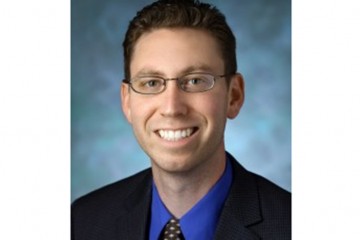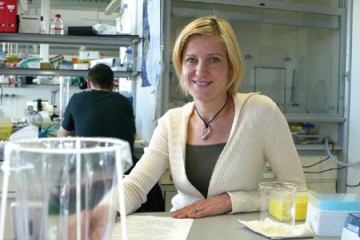
Image caption: Suchi Saria
Suchi Saria, a computer scientist at Johns Hopkins University, has been named to Popular Science's Brilliant 10, the magazine's annual list of the "brightest young minds in science and engineering."
Saria was chosen for her work on computer-based approaches to develop diagnoses and treatments more specific to individual patients, including for septic shock, identified as the cause of 20 to 30 percent of all U.S. hospital deaths.
By creating algorithms to analyze existing medical information, Saria's work "suggests that the best answers might already be out there; they just need to be decoded," Popular Science writes in the 15th annual Brilliant 10, posted online Tuesday. In order to select its Brilliant 10, Popular Science pores over hundreds of nominations from around the country and vets the most promising candidates with experts working in those fields.
"I feel lucky to be at a place like Johns Hopkins where I have the privilege of working with some of the brightest students and collaborators," says Saria, 33, an assistant professor in the Whiting School of Engineering's Department of Computer Science. She also holds a joint appointment in the Department of Health Policy and Management at the Bloomberg School of Public Health, and in the Department of Applied Math and Statistics at the Whiting School.
"Professor Saria is at the forefront of exciting new areas of investigation that are changing the ways we approach patient care," says Ed Schlesinger, dean of the Whiting School of Engineering. "Her vision, combined with her incredible talent and a deep understanding of where engineering, medicine, and health care are going, make her a worthy recipient of this honor."
Describing her work, Saria says, "we're at a unique time when the adoption of electronic health records has grown to nearly 80 percent in hospitals and over 50 percent in outpatient clinics. Further, we're continually collecting more health and behavioral data through devices. By combing through this vast array of data, algorithms can often help us find patterns that pinpoint early signs of declining health and how a patient might respond to specific therapies."
For instance, she says, in sepsis—a syndrome that develops as a reaction to infection—fluids are often given to stabilize a patient. While some patients are helped by fluids, others respond negatively and develop complications. If computer algorithms can predict this, it can help doctors refine their treatment strategy. They can ask "what-if" questions—for example, what would the likely outcome be if the patient were given more fluids versus more drugs to constrict blood vessels, another treatment for sepsis.
Saria's algorithms have proven effective in spotting health risks in premature newborns. She is also using this strategy to create more precise prognosis tools for autoimmune diseases such as scleroderma and lupus.
Her recent published research has focused on saving patients from septic shock, which kills more Americans every year than AIDS, breast cancer, and prostate cancer combined. It's crucial to identify those likely to develop septic shock as soon as possible: every hour that treatment is delayed raises the risk of death by 7 to 8 percent.
Last year Saria led a team that included Johns Hopkins scientists Katharine Henry, a doctoral student in computer science; and David Hager, a critical care specialist, in creating a computer algorithm to identify patients at risk of septic shock. The approach allows clinicians to take action early to prevent organ failure.
The algorithm correctly predicted septic shock in 85 percent of cases, without increasing the false positive rate from screening methods that are common now. More than two-thirds of the time, the method was able to predict septic shock before any organ dysfunction. That's a 60 percent improvement over existing screening protocols.
The algorithm combines 27 factors into a Targeted Real-time Early Warning Score—TREWScore—measuring the risk of an infection developing into septic shock. The algorithm was based on information from the electronic health records of 16,234 patients admitted to intensive care units at Boston's Beth Israel Deaconess Medical Center from 2001 to 2007.
The potential "real life" impact of this work is so significant that Johns Hopkins is now piloting a real-time surveillance tool using this method at the Howard County General Hospital in Maryland. Other health care systems are pursuing ways to use the algorithm as well.
Posted in Health, Science+Technology
Tagged computer science, suchi saria










